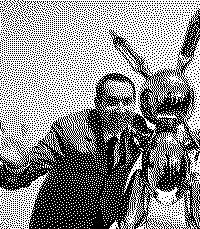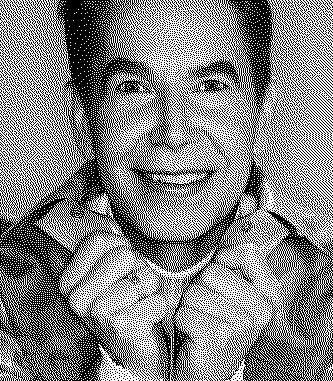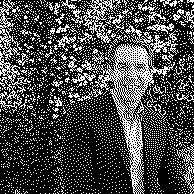Artists/Jeff Koons
Fast Facts
Iconic Works in Stainless Steel
Koons is renowned for his large-scale sculptures made of polished stainless steel. These works often replicate balloon animals or other familiar objects, rendered with mirror-like surfaces.
Use of Kitsch and Popular Culture
Koons's art often explores themes of consumerism, taste, and kitsch. He uses objects and imagery from popular culture, transforming them into high art.
Auction Record
Holds the record for the highest price paid for a work by a living artist at auction ($91.1m)
Diverse use of mediums
Uses a wide range of materials, including stainless steel, porcelain, and inflatable vinyl
Controversy and Criticism
His work has often been the subject of controversy, with critics questioning its artistic value and originality. However, Koons's impact on the art world is undeniable, and his work is displayed in major museums and collections worldwide.
Biography



Jeff Koons, born on January 21, 1955, in York, Pennsylvania, is a seminal figure in contemporary art, renowned for his work that intertwines the realms of popular culture and high art.
Emerging in the 1980s, Koons became one of the most provocative and influential artists of his time, challenging the boundaries of art with his audacious creations. His career began after studying at the School of the Art Institute in Chicago and working with Chicago artist Ed Paschke. Koons then graduated from the Maryland Institute of Art (B.F.A., 1976) and moved to New York City, where his artistic journey took a significant turn (Encyclopedia Britannica).
Koons's early work is characterized by his exploration of consumer culture and the media landscape of the era. He rose to prominence by creating art that involved displaying commercial products, such as vacuum cleaners and basketballs, in unconventional contexts, thus blurring the lines between everyday objects and art. This period saw the emergence of his iconic series such as "The Pre-New," "The New," and "Equilibrium," where he showcased vacuum cleaners in illuminated Perspex boxes and basketballs floating in distilled water, sparking debates about the nature and value of art (Wikipedia).
His factory-like studio, reminiscent of Andy Warhol's Factory, became a hub for art fabrication, employing a color-by-numbers system that allowed his assistants to execute works that appeared as though they were created by a single hand. This method emphasized Koons's exploration of mass production and consumerism, further blurring the distinction between the artist's hand and manufactured goods (Wikipedia).
Koons's work often involves the use of ready-made objects and high-gloss, industrial materials, which has led to iconic pieces like "Rabbit" (1986) and "Balloon Dog." "Rabbit," a stainless steel cast of an inflatable bunny, and "Balloon Dog" are exemplary of Koons's fascination with the transformation of mundane objects into high art, playing with perceptions of value, taste, and the role of the artist. The sale of "Rabbit" in 2019 for over $90 million set a record for the highest price achieved by a work by a living artist at auction, underscoring Koons's monumental impact on the art market and contemporary art discourse (Wikipedia).
In addition to his sculptural work, Koons's "Luxury and Degradation" series critically examines the allure and effects of consumerism and luxury, utilizing alcohol-related paraphernalia to comment on social hierarchies and values. This series, like much of his work, invites viewers to reconsider the cultural symbols and everyday objects that saturate their lives (Wikipedia).
Koons's ability to provoke and challenge, combined with his meticulous craftsmanship and innovative use of materials, has cemented his status as a groundbreaking artist. His work continues to spark debate, eliciting a range of responses from admiration to controversy, and remains central to discussions about the nature of art in the contemporary era (The Art Story).
Bodies of Work
-

The New
-

Equilibrium
-

Banality
-

Made in Heaven
-

Celebration
-

Hulk Elvis
-

Gazing Ball
-

Inflatables
-

Luxury & Degradation
-

Statuary
-

Kiepenkerl
-

Flower Puppy
-

Elephant
-

Easyfun
-

Split-Rocker
-

Easyfun-Ethereal
-

Titi (stainless)
-

Balloon Swan
-

Balloon Rabbit
-

Balloon Monkey
-

Lobster
-

Popeye
-

Popeye (granite)
-

Hulk Elvis
-

Antiquity
-

Gazing Ball (bottlerack)
-

Gazing Ball (Stool)
-

Gazing Ball Paintings
-

Bouquet of Tulips
-

Aphrodite
-

Apollo
-

Moon Phases
-

Wall Works
Importance
Jeff Koons' significance in the art world is multifaceted and profound. His work, emerging prominently in the 1980s, is known for challenging the conventional boundaries between high art and popular culture. Koons has continually captivated, provoked, and sometimes divided the art community and public alike, securing his place as one of the most influential artists of the contemporary era.
Redefining the Artistic Process
Koons' method of art fabrication, utilizing a studio with assistants akin to an industrial factory, challenges traditional notions of the artist's hand and individual creativity. This approach, reminiscent of Andy Warhol's Factory, positions Koons not just as an artist but as the head of a creative enterprise, emphasizing the concept over the execution (Wikipedia).
Exploring Consumerism and Popular Culture
Koons' work is deeply entrenched in the aesthetics of consumer culture, often repurposing commercial imagery and objects as art. His approach, which includes the unaltered presentation of advertisements and the elevation of kitsch into high art, critiques and celebrates consumerism simultaneously. This duality invites viewers to question the value systems of art and commodities, making his work a descendant of pioneers like Andy Warhol and Richard Prince (Encyclopedia Britannica) (The Art Story).
Innovations in Materials and Techniques
Koons has pushed the boundaries of art fabrication, employing high-tech industrial processes to achieve the immaculate surfaces and intricate details characteristic of his sculptures. His use of mirror-polished stainless steel and other materials not only manipulates viewer perception but also invites introspection, blending technological innovation with conceptual depth (The Art Story).
Engagement with Art History
Koons' works are often in dialogue with historical artworks, reinterpreting themes and aesthetics from the canon of Western art. By incorporating elements from antiquity to the baroque and beyond into his sculptures and paintings, he bridges the gap between past and present, inviting reconsideration of historical artworks in contemporary contexts (Welcome).
Controversy and Public Engagement
Koons has been a polarizing figure, stirring debate over the merit and meaning of his art. His ability to provoke discussion, whether through works that challenge notions of taste or through high-profile legal battles over copyright and appropriation, underscores his impact on both the art world and broader cultural conversations (The Art Story).
Record-Breaking Sales and Market Influence
Koons' art has achieved record prices at auction, underscoring his significant impact on the art market. These sales not only reflect his commercial success but also the market's valuation of contemporary art, influencing trends and perceptions within the art economy (Encyclopedia Britannica).
Technique
Jeff Koons' approach to art making is as distinctive and varied as the artworks he creates. From his early career to his more recent works, Koons has employed a range of techniques and methodologies that reflect his unique perspective on art, culture, and manufacturing processes.
Use of Found Objects
In the early stages of his career, Koons started by using found objects, purchasing brand new consumer goods like vacuum cleaners and basketballs, and presenting them as art to comment on consumer culture. These items were often displayed in ways that highlighted their design and consumer appeal (TheCollector).
Collaboration with Skilled Artisans
As Koons' ambitions grew, he began outsourcing the production of his artworks to highly skilled artisans. This includes works remade in metal, porcelain, and other materials, scaling up objects to create a sense of the grotesque or nightmarish. Koons is known for his precise visions, which he communicates to the artisans to bring his ideas to life (TheCollector).
Fabrication and Workshop Model
Koons established a large workshop, reminiscent of Andy Warhol's Factory, where he oversees a team of assistants who produce his artworks. This studio operates with a high degree of professionalism and precision, employing a "color-by-numbers" system to ensure that each piece is executed according to Koons' exact specifications (Wikipedia).
Innovative Use of Materials and Technology
Koons frequently uses advanced technology and materials in his work. This includes the use of computer technology to design artworks and employing materials like mirror-polished stainless steel and aluminum. His works often involve complex fabrication techniques to achieve the immaculate finishes that characterize his pieces (TheCollector) (My Modern Met).
Conceptual and Series Work
Koons often works within series, exploring themes over multiple works. This approach allows him to delve deeply into certain motifs or ideas, such as the Celebration series which includes the Balloon Dog sculptures. Each series often employs specific materials and fabrication techniques suited to the thematic concerns Koons is addressing (My Modern Met).
Engagement with Art History
In addition to modern manufacturing techniques, Koons engages deeply with art history, reinterpreting themes, styles, and motifs from the past. This is evident in works like his Gazing Ball series, where replicas of famous statues are presented with a blue reflective orb, inviting viewers into a dialogue with the history of art (My Modern Met).








